Now, two weeks or so removed from having played the Karoo at Cabot Citrus Farms, in my view the lynchpin of the golf course is its quartet of par 5s, which come nicely interspersed among the eighteen at the 4th, 6th, 14th, and 17th. The 4th and 14th have not been altered too greatly from their previous iterations; and, as a result, I give Franz and co credit for recognizing good things and not messing with them. On the other two, the 6th and the 17th, more work was done, particularly to the latter which is entirely new.
One of unfortunate downsides of the modern iteration of golf has been, more or less, the amalgamation of par 5s and longer par 4s, wherein for golfers of a higher skill level, at least, the strategy on both has essentially become one and the same: find your drive, then mindlessly reach for whatever club will get you to the green, without mind to alternatives. Upon approach, the best par 5s should cause the golfer both contemplation and consternation; in other words, they shouldn’t play similar to long par 4—just as driveable par 4s shouldn’t merely be long par 3s in disguise (and yes, the par on the card matters – anyone who says otherwise is lying). Ample reward should be taunted to the golfer who is willing to risk it; yet a more conservative path should also be provided for the less brave one, from which he/she can then plot his/her way to the green and atone for lack of strength or valor with deftness of touch and measure. To produce such a par 5, especially at less than 600 yards, and especially without the use of water, takes real dexterity and shrewdness. That being said, the practitioners who plied their trade upon what is now the Karoo managed to do so; and thus, the set is worthy of a longer study.
The 4th, 511 yards
In terms of visual appeal, few par 5s can match the initial, breath-halting one at the Karoo, which, as I stated earlier, with good reason, has not been altered much from its Pine Barrens version. Here, a choice is presented to the golfer: take aim left and hit it down the more inviting side of the split-fairway; or muster your courage and aim right at the more intimidating one.
Both sides, however, present an intimidating perspective from the tee. To the left, out-of-bounds looms all the way beyond the fairway and is very much in play with a slight pull or over-draw. Due to the positioning of the tee, which is set about fifty yards from the boundary fence, the golfer must aim or direct the flight path of his shot towards the out-of-bounds, which renders its presence far more threatening and ubiquitous than if the tee was set nearer or right against the boundary and the tee-shot thus had to be played away or shaped off of it.
To the right, the craggly waste-area juts up and smothers the island of the fairway, of which only a sliver is hinted from the tee. The main reward for attempting to play here is the clearer view of the green that is afforded due to the raised nature of the fairway, as well as the shorter distance due to the rightward curvature of the last two hundred yards of the hole. If I was to nitpick, which is what I love to do more than anything else, perhaps I’d suggest that either the green or the fronting hazard would need to be reoriented in order to provide more of a strategic-stimulus for aiming to this side of the fairway. As it’s currently configured, strategically speaking, the better side from which to approach is the left, although the view of the green pad is obscured from there; and truth be told, I don’t really see why you’d ever aim right, since the potential reward for doing so is too meager for the inherent risk.
The 4th features one of the more elegant green complexes on the golf course, specifically due to the way that it blends in, as if draped, found rather than forced, with the circumambient surroundings. The putting surface is defined by a primary athwart tier, which can leave dicey putts for those whose approaches are left above the hole. Otherwise, some comparatively minor ripples tremble through it.
The 6th, 561 yards
Among the holes that, more or less, retained their Pine Barrens ethos through the renovation, the 6th underwent the most significant improvement, in my view. From the back-tee, only the very lengthiest of lengthy hitters is likely to be capable of flying the band of bunkers that now define and bisect the fairway. However, the ideal play is to try to land your drive as near to them as possible, so as to avoid losing distance due to the rightward cant of the fairway which deflects balls further from the target, as well as having a clearer view of the green and a hope of getting home in two. Broadly speaking, the strategy of the tee ball remains unaltered from its former self, but Franz’s fairway bunker work here is some of the more attractive on the golf course.
Previously, a large waste area guarded the right side of the final hundred yards of the hole and had to be carried in order to hit the severely crowned, very Pinehurst-esque green in two. Franz, to wonderful effect, both in terms of strategy and aesthetic, elongated the bunker and made it wrap all the way around the extremely long, yet quite narrow putting surface. In particular, this leaves a perplexing choice for those whose drive leaves them unable to reach the green in two strokes. You can opt to lay-up further back and leave yourself a clearer and better angle into the green, albeit one from which you must contend with the substantial knob just short of the putting surface; or, otherwise, hit a longer second down the left and come in from a shorter distance but a worse and more perilous angle to the green.
The nob is also liable to affect those, like me, who try to go for it in two but fail to carry the bunker. Having failed to do so, and having left myself with it between my ball and the hole, I faced the daunting prospect of either trying to nip a sand-wedge over it, back-foot skipping a lower-lofted club into it, or going around it completely. The snaking green, itself, which doubles with the perpendicularly routed 1st, features extreme tilt from right-to-left and number of ridges and waves that make hitting it close imperative.
14th, 581 yards
Upon first glance, the comparatively narrow tee shot at the 14th may appear somewhat benign and, even, inconsequential; however it is imperative to challenge the waste area that juts in along the right in order to have a chance at green, or, at least, the possibility to lay it further down, whether on the right or left of the split fairway. This exposed central waste area, which is cut into the substantial ridge that bisects the playing corridor once it veers leftward for the last two hundred and forty yards or so, defines the strategy for those whose tee-ball culminates anywhere down the left half of the fairway, where the lingering trees obstruct the direct route to the green, or those who cannot reach the green in two strokes. Time, weather, and decades of play had reaped their cruel effects upon this attractive central feature, and Franz and co restored its resplendence, while also reworking it slightly.
Daring to fly the hazardous ridge reaps benefit of a clear view and a better angle into the severely canted surface benched into a diagonally sloping natural amphitheater; whereas those who opt to lay it beneath, on the lower side of the fairway, face a partially obscured approach and a worse angle from where they must contend with the craggly bunkers short and beneath the putting surface. Aesthetic wise, this is my favorite green complex on the golf course, one which Franz reworked cleverly, in order to emphasize the strategy of the second shot, wherein its orientation now provides a more inviting angle from the upper fairway than Fazio’s had previously.
17th, 500 yards
This is an entirely new half-par hole that plays in the opposite direction through the same corridor that the long par 4, 2nd, of Pine Barrens formerly occupied; and what Franz built is likely to divide opinion, which is often, of course, the tell-tale sign of a good, or at least stimulating, golf hole. Frankly, I’m not sure where I stand on it after merely a single play; it’s simply that sort of golf hole.
In fact, the tee shot is one of, if not the most standard and straightforward-seeming on the Karoo. Playing gradually uphill, with a severe right to left cant, your eye and concern are naturally drawn to the triplet of cavernous bunkers lining the left side of the fairway. You certainly want to hit it up the right; however, anything that misses too far right will be blocked out by the tall, stately pines which define this segment of the property.
Where it gets zany is upon approach. Most architects, I think, would have set their green in front, or into, the central hill atop which Fazio’s tee stood; Franz, however, bucked such common thought and instead tucked his complex to the back and right of it. He then bunkered the fronting slope and added a second fairway that crests the hill and runs sharply down towards the green. In my view, unless you possess the power to fly it all the way onto the surface with enough spin, which very few will, the only reasonable option is to lay up way right, nearly into the rough, and approach front-to-back pitched the green from such a diagonal angle. Firstly, the pitch from the fairway atop the hill is so severely downhill that, unless the hole is cut at the very back, it’s essentially impossible to stop your ball on the front half of the putting surface (in fact, as someone in our group who shall remain nameless showed, it’s much easier to have it veer rightward and tumble over the false front that guards the entrance of the green from the right fairway). And, secondly, the aforementioned pitch is so extreme that, if you do fly the fronting bunkers, any hotly running wood is going to bounce and scamper way over, almost to the snack shack and 7th tee box.
All in all, this is a hole that, like any, is sure to mature as it grows in and change over time; and it’s one, like the whole of the golf course, that I look forward to figuring out further upon repeat play.


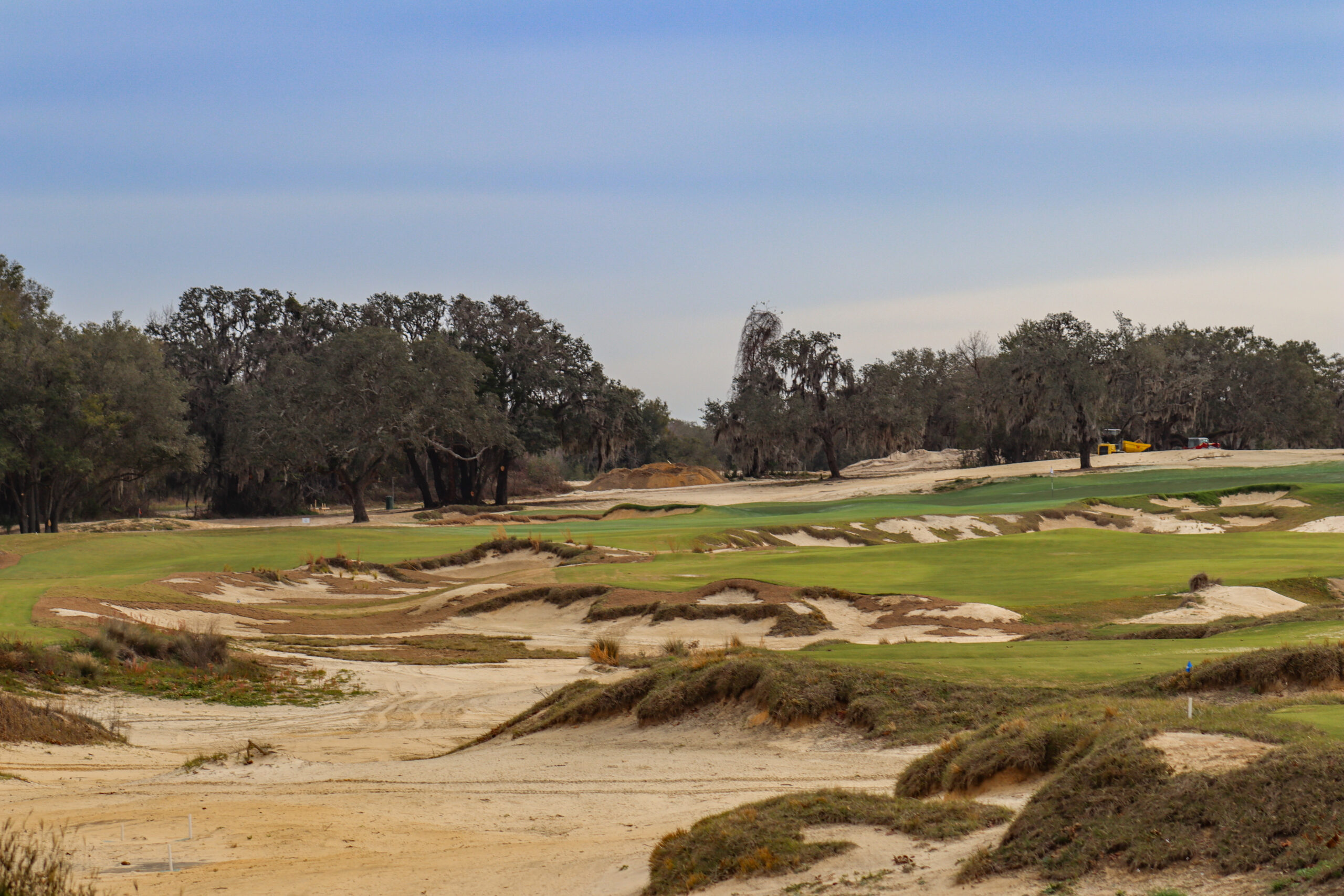
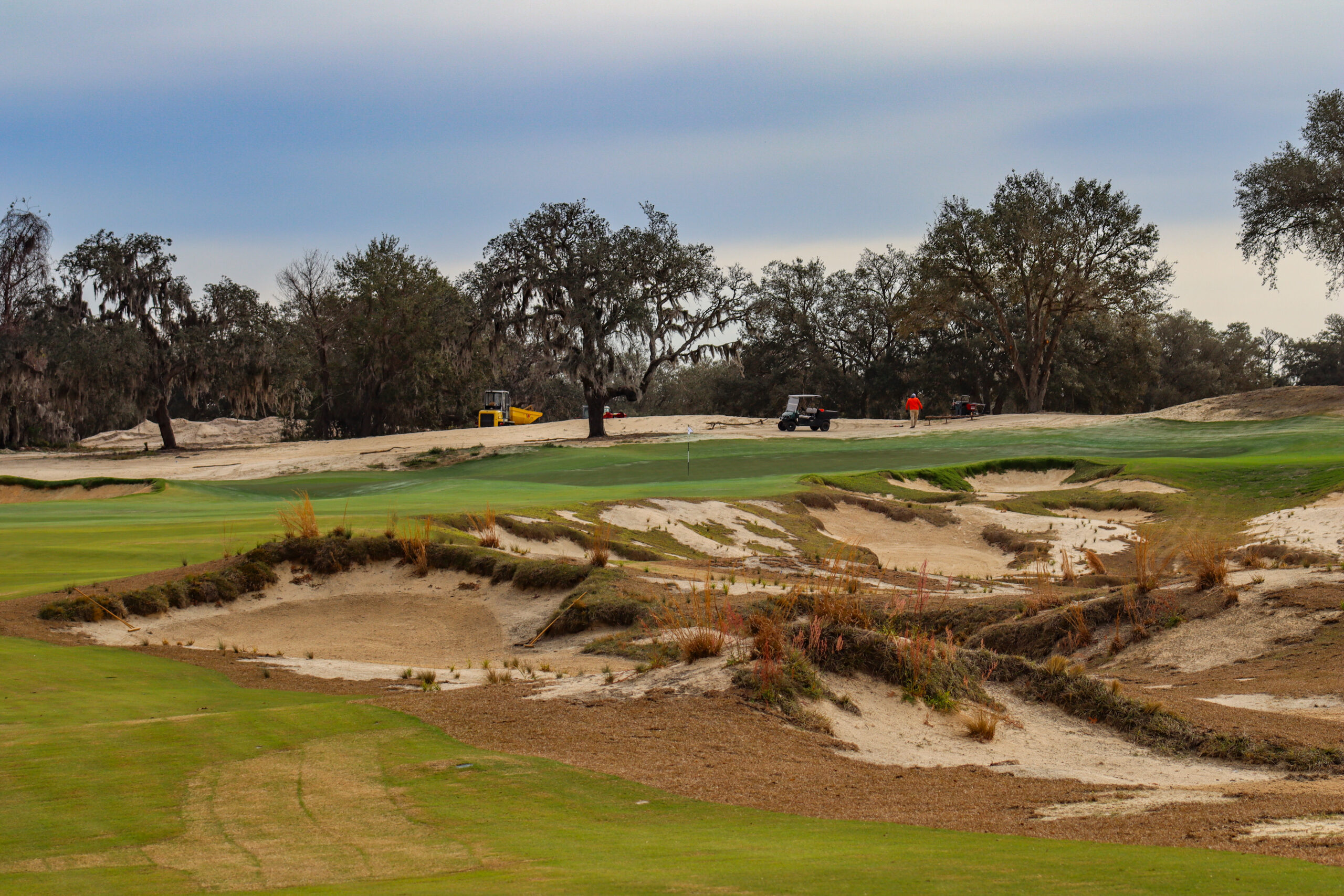

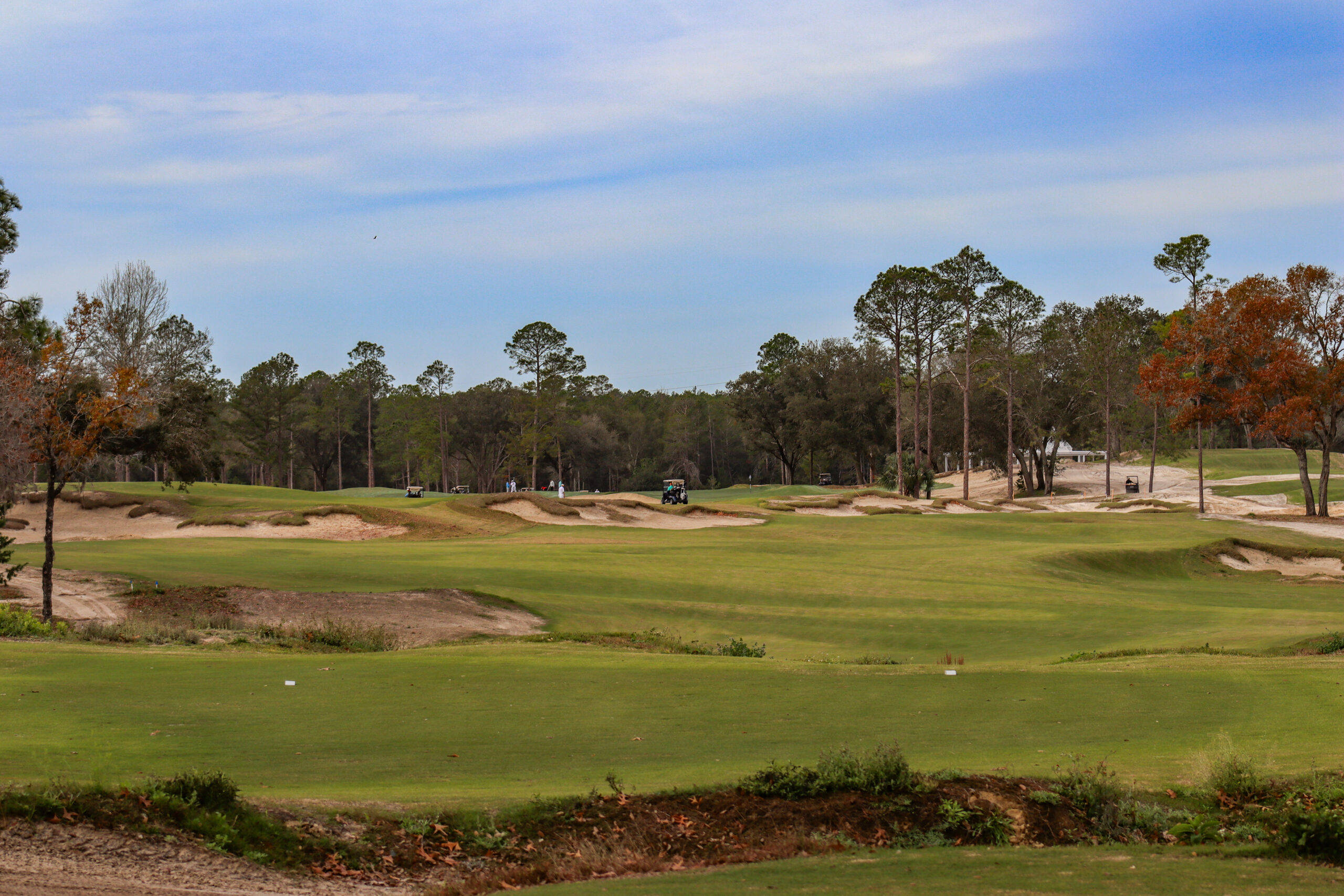
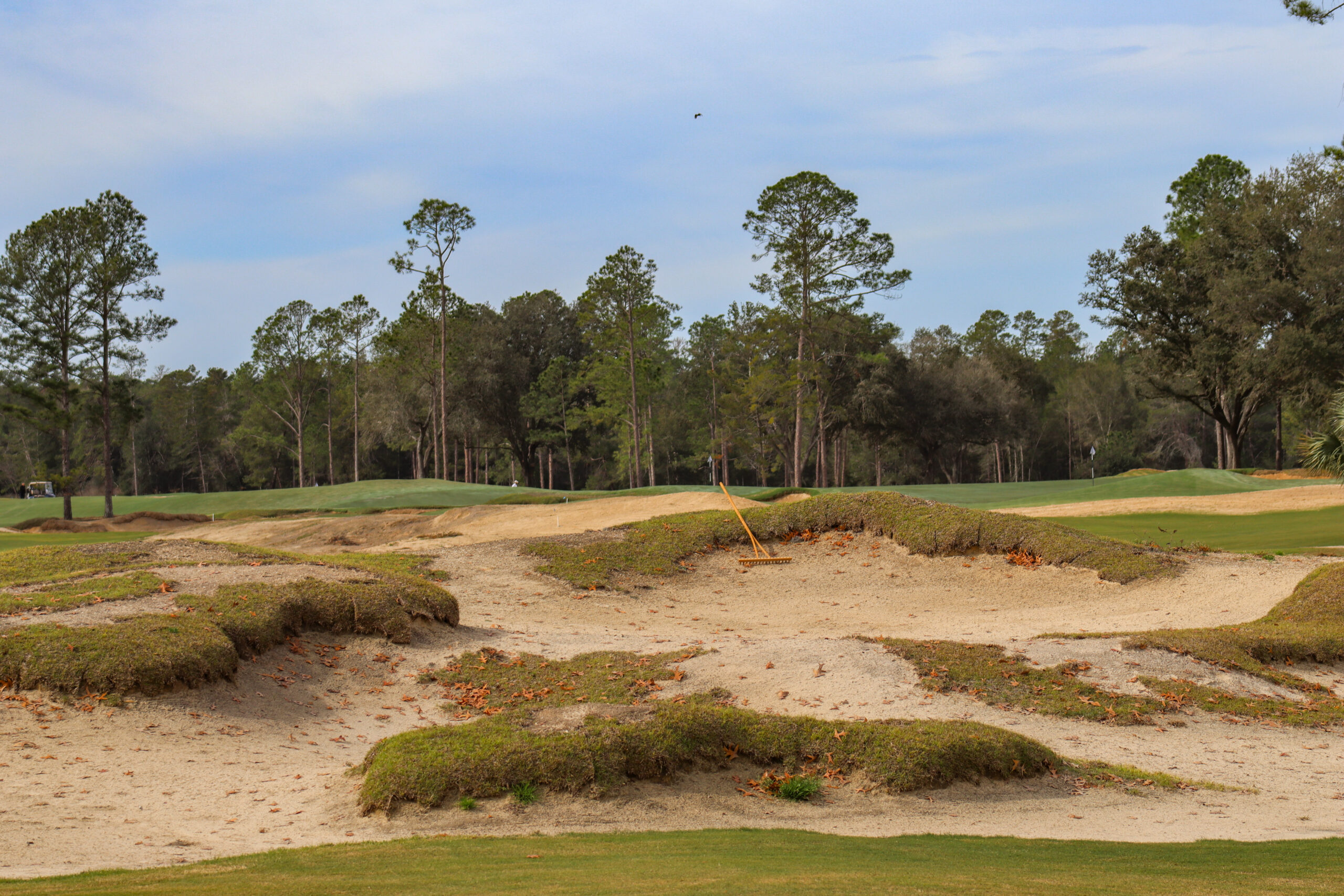
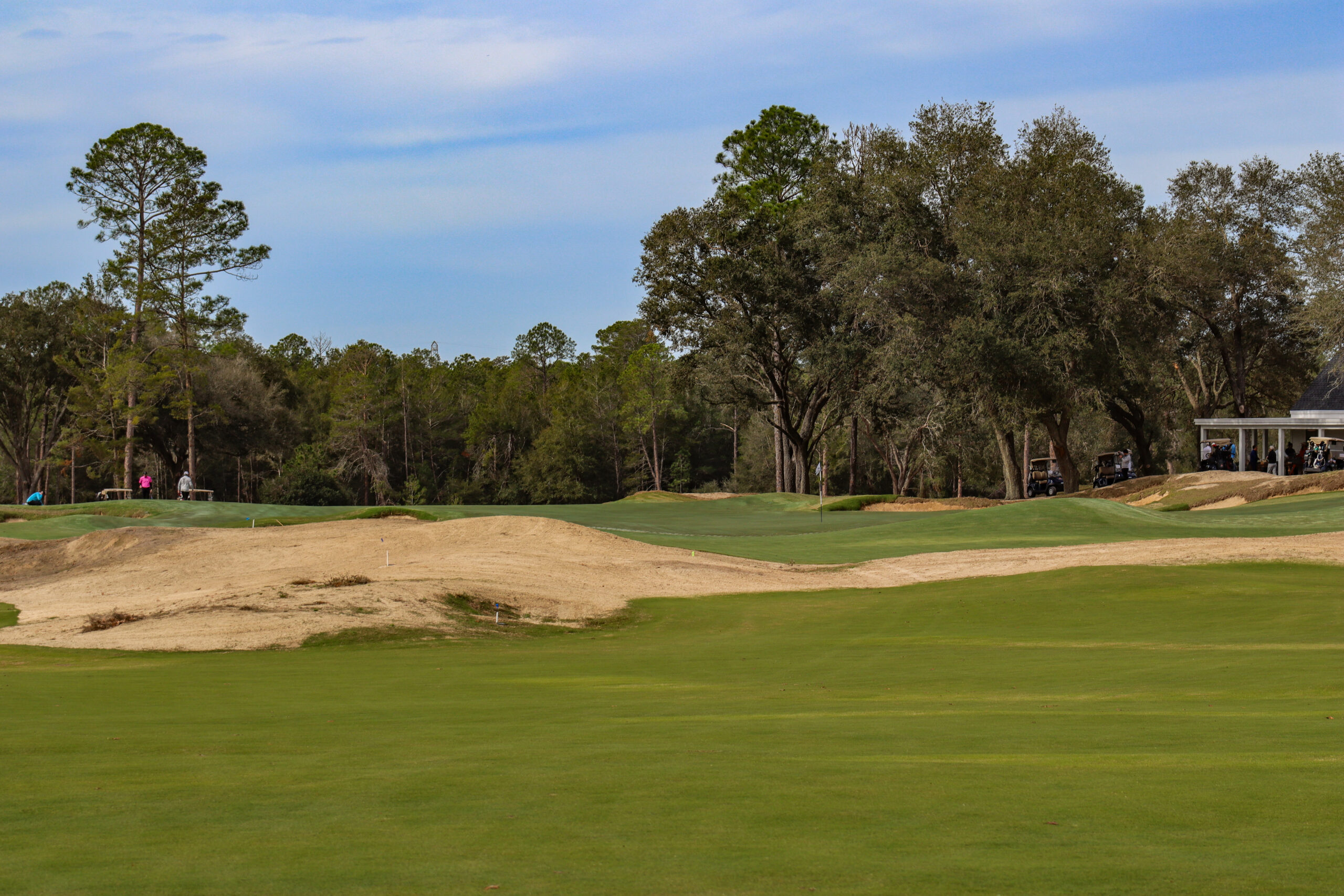
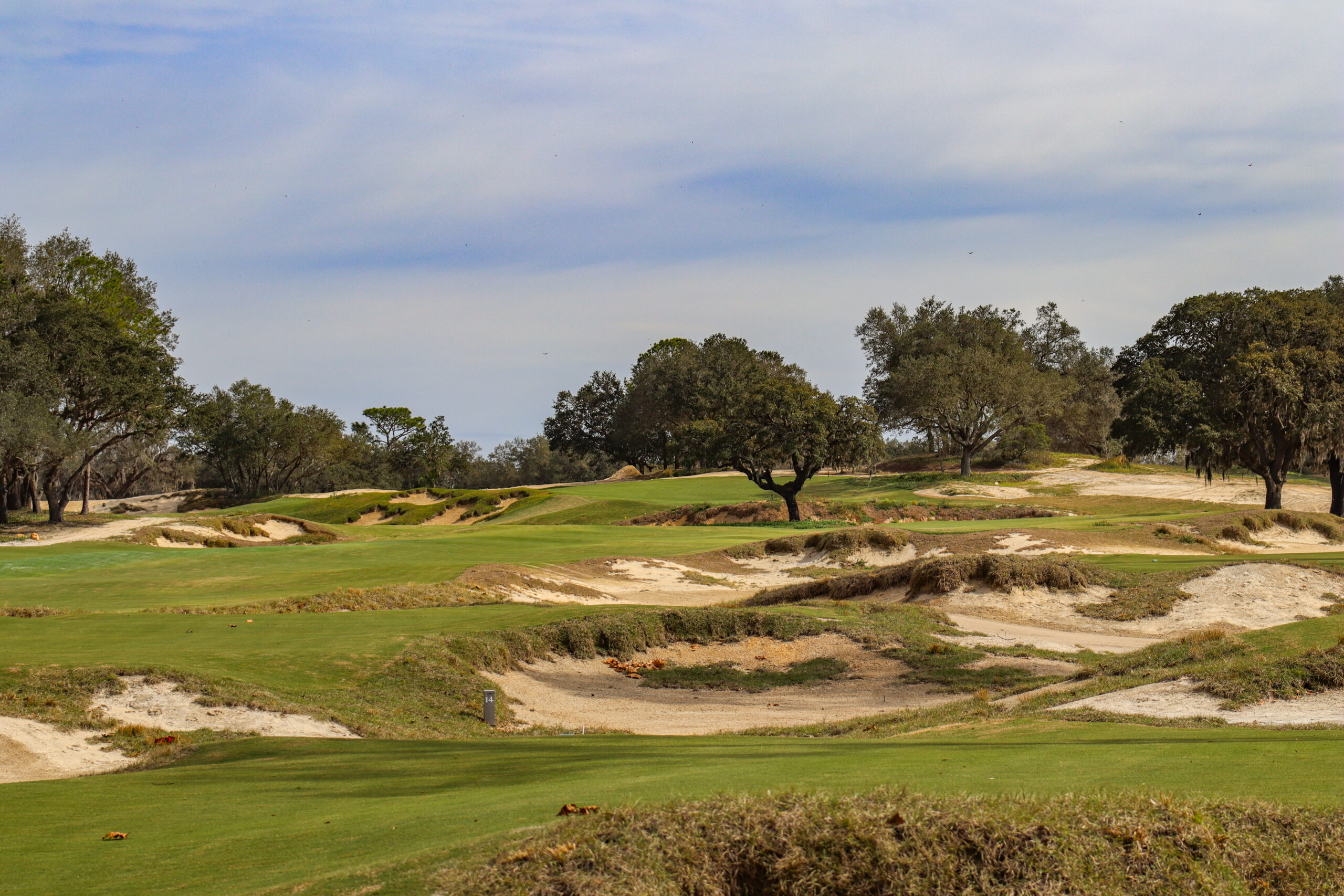
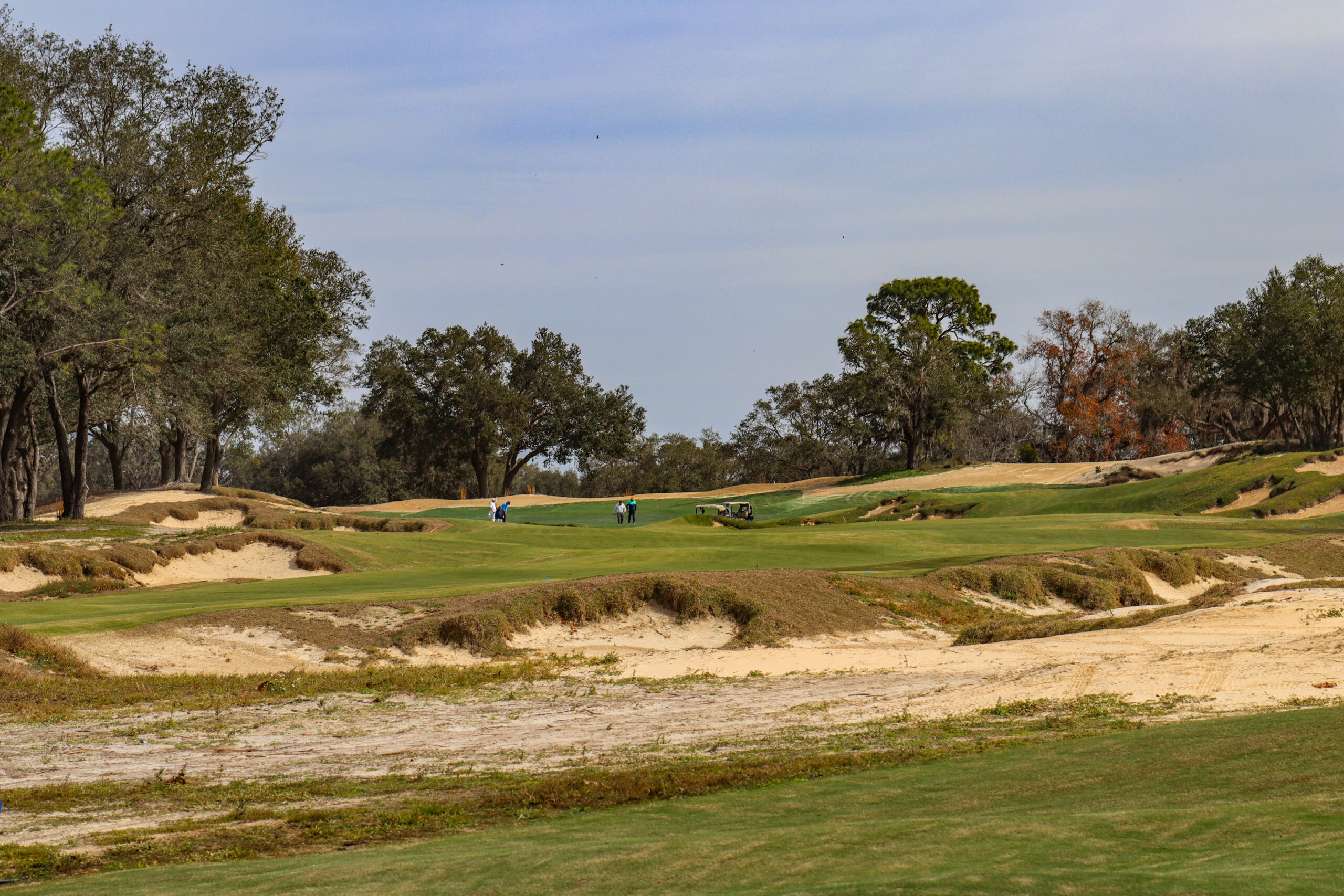
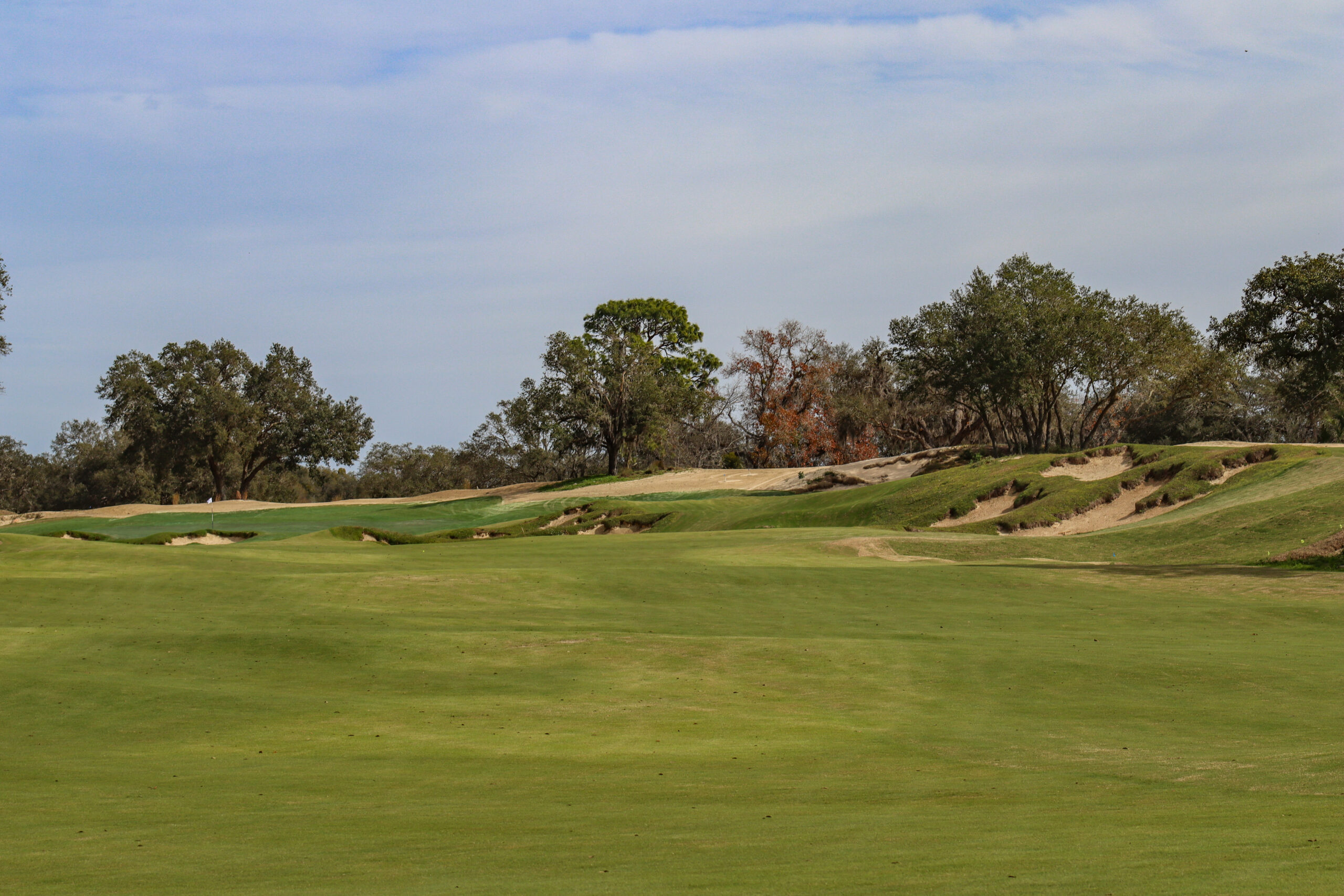
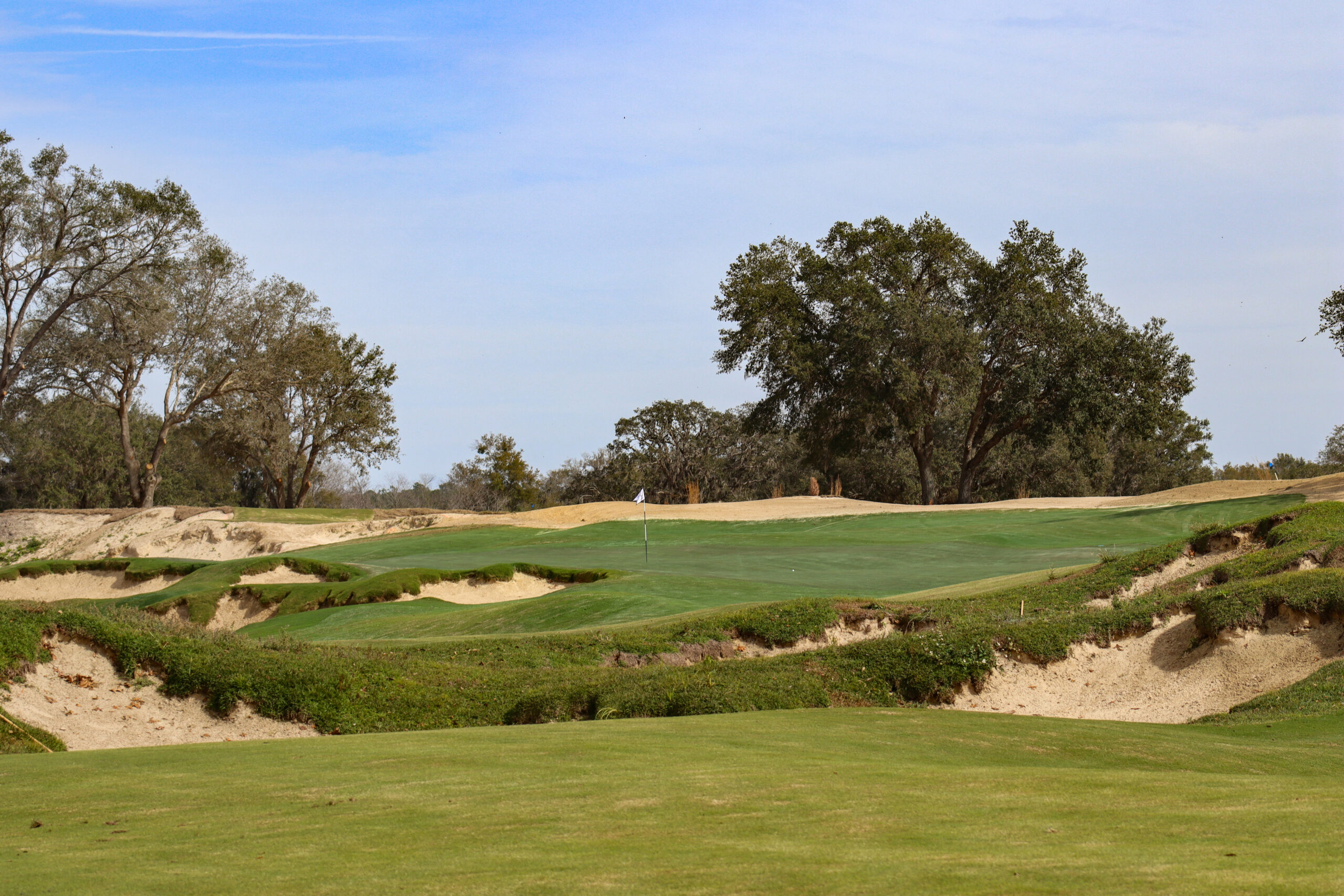
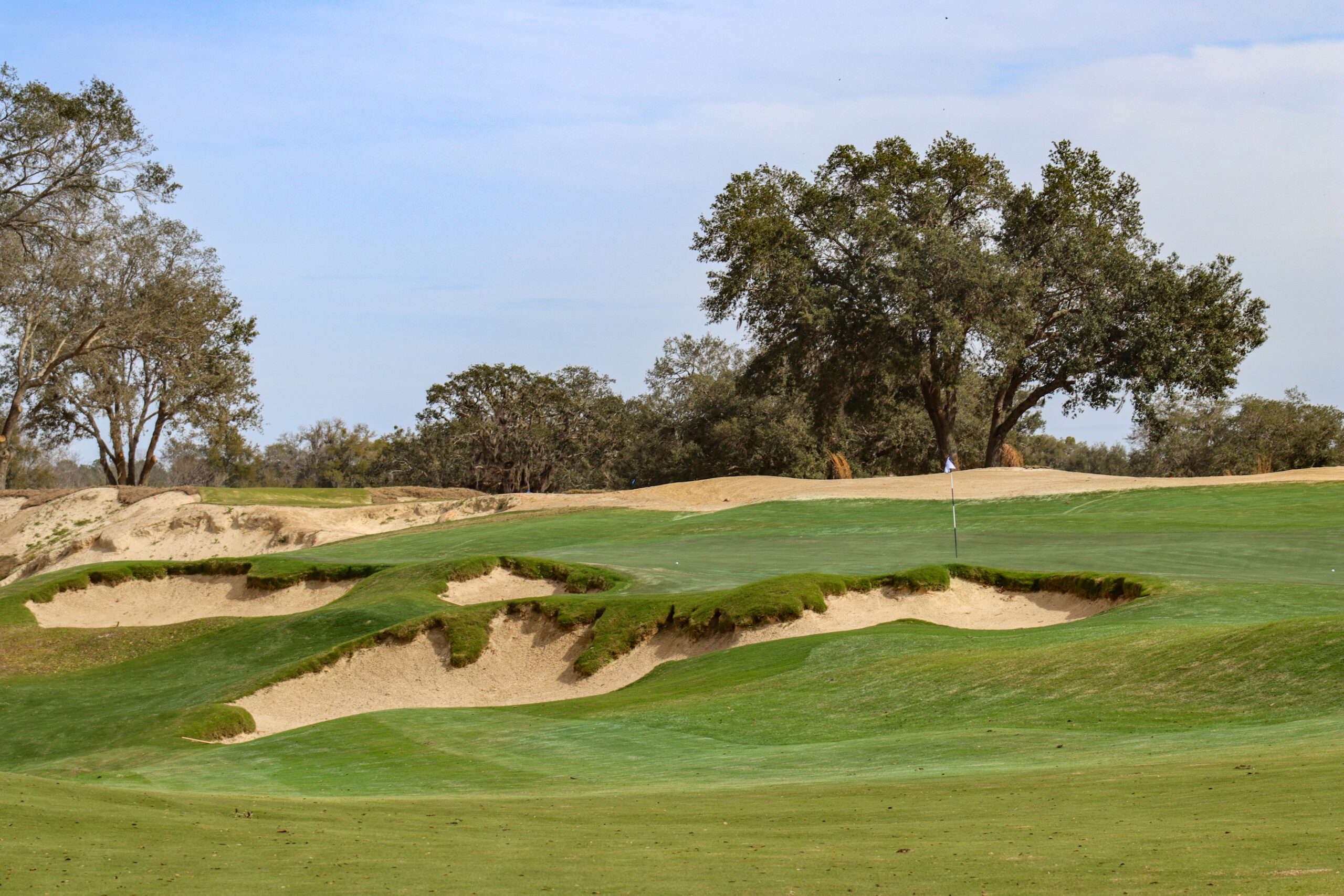

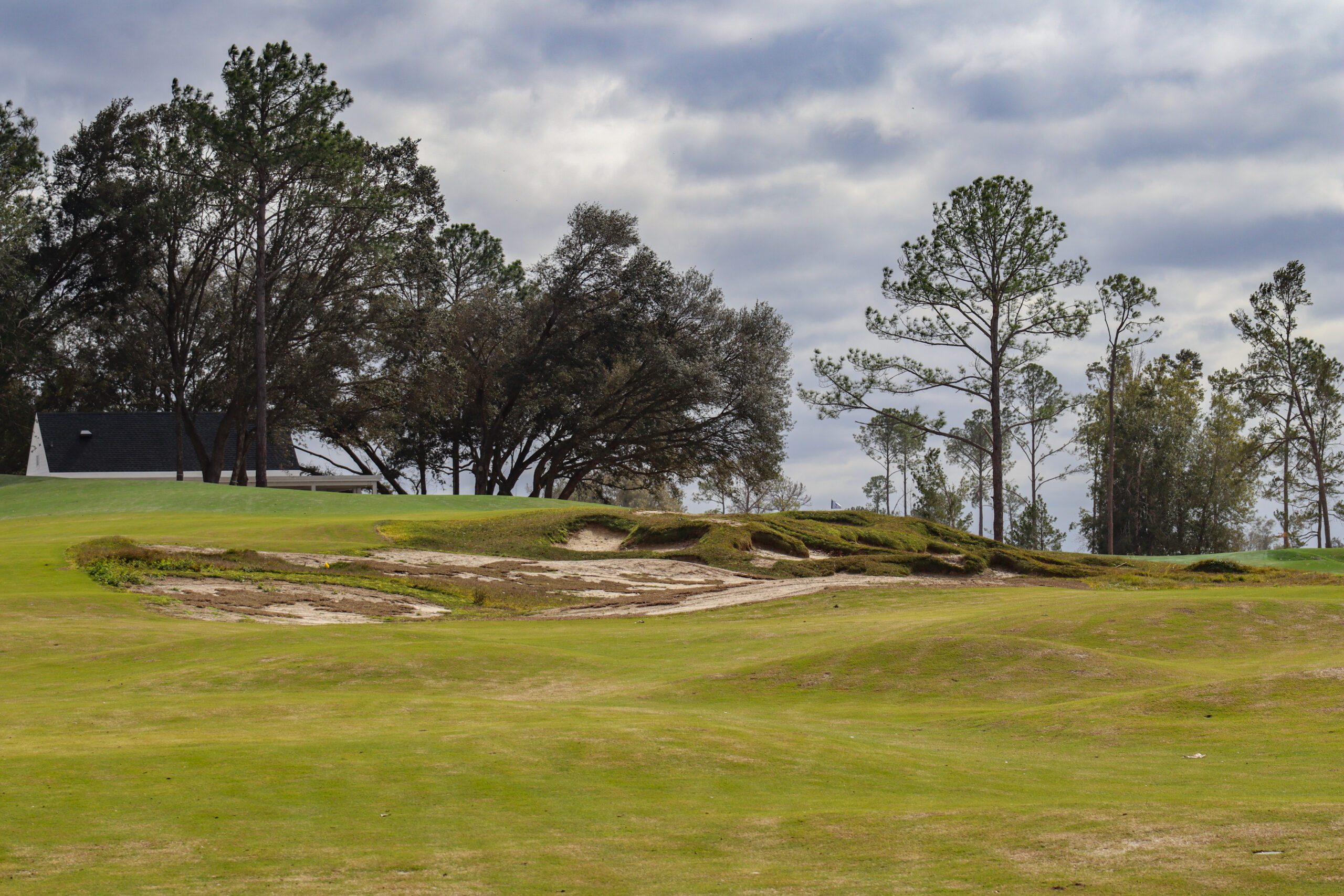







Leave A Comment